What is a relative clause?
A relative clause (also called an “adjective clause” because it gives us more information about a particular noun) is a type of dependent clause. Every relative clause has a subject and a verb, but these clauses can’t stand by themselves as complete sentences.
How to identify a relative clause
A relative clause is introduced by a relative pronoun. These pronouns can stand in for a noun, a noun phrase, or another pronoun. Here is a list of relative pronouns you can learn to help make identifying relative clauses a lot easier:
- who
- whom
- whose
- that
- which
Defining relative clauses
A defining relative clause (also called an essential clause) identifies a noun or pronoun in the main clause and is needed to help us understand the meaning of the sentence.
Let’s look at a few examples:
- I spoke to the boy who was making a noise.
- She ate the food that was on the table.
-
We looked for the person whose nametag was missing.
In the three sentences above, the relative clauses (underlined) specify the objects of the main clauses (set in italics) and give us more information about them.
If we remove these relative clauses, we wouldn’t be able to understand the exact meaning of the sentences (for example, which boy did I speak to? The one making a noise. What food did she eat? The food that was on the table. Which person did they look for? The one without a nametag). This specific information about the noun in the main clause is vital to our understanding. That is why they are called defining (or essential) clauses. We need them.
Note that we don’t introduce a defining clause with a comma.
Casual language
In casual speech or writing, we can sometimes leave out the relative pronoun:
- The girl whom I met yesterday was beautiful. (Standard)
- The girl I met yesterday was beautiful. (Casual)
As we can see in the above example, if the subject in the main clause differs from the subject in the defining relative clause, it is common to omit the relative pronoun:
- The art that we saw this morning was priceless. (Standard)
- The art we saw this morning was priceless. (Casual)
However, if the subject in the main clause and relative clause is the same, we always need to include the relative pronoun. This is because it serves as the subject of the relative clause.
- The teacher who taught me English is from London.
- The mail that is on the table is yours.
In these two examples, each sentence only has one subject: “the teacher” and “the mail.” If we removed the relative pronouns (“who” and “that”), neither sentence would make any sense. Let’s see how this would look:
- The teacher taught me English is from London. (Incorrect; missing “who”)
- The mail is on the table is yours. (Incorrect; missing “that”)
Non-defining relative clauses
A non-defining relative clause (also known as a non-essential clause) gives us information about a preceding noun or pronoun, but it doesn’t actually specify them. As a result, this information isn’t needed for us to understand the meaning of the sentence.
In the examples below, note that we use a comma before introducing a non-defining relative clause.
- My first car, which I got two decades ago, still runs perfectly.
- My wife, whom I met at university, has always loved learning.
 Let’s see what happens if we take out the relative clauses from the two examples above:
Let’s see what happens if we take out the relative clauses from the two examples above:
- My first car still runs perfectly.
- My wife has always loved learning.
Even with the relative clauses taken away, both of these sentences remain perfectly grammatical, and the main meaning of the sentence is still clearly understood. The information we removed was thus non-essential: we don’t need it to identify the subject in the main clause.
Here are a few more examples of non-defining relative clauses:
- My best friend, who lives in Oregon, is a photographer.
- John Lennon, whose music I love, was a peace activist.
-
The Grand Canyon, which is in Arizona, is a popular tourist attraction.
Casual language
Non-defining relative clauses typically have a rather formal tone to their structure. As a result, they are more commonly used in written language than spoken (i.e., casual) conversation.
- My grandmother, who is ninety-seven years old, still tends to her garden. (Formal)
- My grandmother is ninety-seven years old and still tends to her garden. (Casual)
- The Sphinx, which is an ancient wonder of the world, is incredible. (Formal)
- The Sphinx is an ancient wonder of the world. It’s incredible. (Casual)
Be careful with commas
One of the most important rules to remember is that we don’t use a comma when introducing a defining relative clause, but we do use a comma before a non-defining relative clause. This is important because a single comma can change the meaning of the entire sentence.
Take a look at the following examples:
-
My brother who likes to read became an author.
This suggests that the speaker has more than one brother, and it is the one who likes to read who became an author. In other words, we are using a defining relative clause to identify which brother became an author.
-
My brother, who likes to read, became an author.
In this case, the first comma introduces a non-defining relative clause. This suggests that we don’t need this extra information to identify which brother became an author. The implication now is that the speaker only has one brother.
* * *
For more help with your English grammar and writing, have a look at our resource page for the best guides and books available!
Stay in Touch!
Do you want to learn how to read, write, and speak English with confidence? Are there any grammar rules that you find hard or confusing? Drop us a comment to let us know and we’ll help you in your journey to learn English!

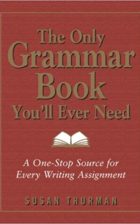
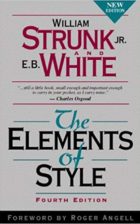
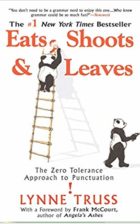


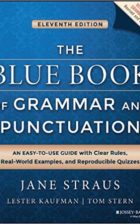

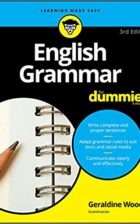

This helped me a lot, thanks. I was confused about when to use commas, but I think I get it now.
Hi Raya,
We’re glad to hear that! Let us know if you need help with anything else!
Are restrictive clauses and non-restrictive clauses the same things as defining clauses and non-defining clauses?
Hi Brooke,
Yes, those are just different names for the same things. Defining clauses are also called restrictive or essential clauses, while non-defining clauses are also called non-restrictive or non-essential clauses. They have a quite a few names!